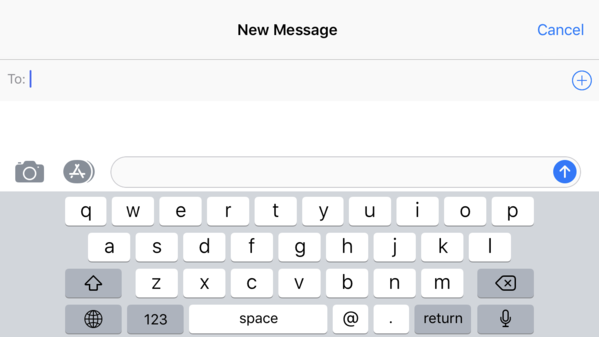When you open an application on your smart device that requires typing, the keyboard will most likely be offered in the QWERTY format. Named after the first six letters of the keyboard, QWERTY was first introduced on a typewriter in the 1870s and has been widely used ever since. However, a recent study by the Ace Centre has suggested that QWERTY is not the most accessible keyboard for individuals using assistive technologies like switch-scanning.
When QWERTY was first invented, the layout of the letters was designed to prevent the jamming of typewriter keys. In other words, this design was a solution to a problem that no longer exists in the 21st century. The 150-year-old layout does not take into account the letters that are the most frequently used in English words, meaning that switch users require more scanning steps to complete common phrases. A Frequency Organized Keyboard customizes the layout of letters with the most frequent letters that appear in the user’s language placed in an arrangement that reduces the number of steps it takes to type that letter. The study found that these keyboards that adapt to a user’s frequently used letters are 30-40% more efficient than the QWERTY layout.

Frequency of Letters
In 2012, Peter Norvig analyzed the Google Books database to organize the letters used in the English language in terms of its frequency. He used the data of 97,565 distinct words, which were mentioned 743,842,922,321 times to discover that E, A, T, O, I, N, and S were the top seven letters that appeared the most frequently. To illustrate the impact of this discovery, on the iPhone keyboard, it takes eight scan steps to reach the letter I, versus just one scan step for the letter Q. According to that study, the letter I was the 5th most frequent letter used in English, while Q fell into 18th place. The traditional keyboard layout makes typing less efficient for Switch Control and Tecla users who should intuitively be able to use less scanning steps to communicate.

The Ace Centre study focused specifically on finding solutions to implement Frequency Organized Keyboards into low tech assistive communication layouts for therapists to use with nonverbal patients. One of the downsides of designing a layout on based an individual’s vocabulary is that the frequency results may vary and produce short-term results. For example, the individual studied by the Ace Centre, David, was planning for his daughter’s wedding at the time of the study, therefore the letter W appeared more frequently in his vocabulary compared to the Norvig study.
Frequency Organized Keyboards can be implemented into high-tech smart devices for switch users through AssistiveWare’s Keeble app. Keeble is an accessible keyboard for iOS devices that allows Switch Control and Switch Access users to type on keyboards that are optimized for scanning. It may take some getting used to for users who are accustomed to QWERTY, but it significantly increases the speed of typing for individuals with fine motor impairments with optimized scanning layouts. The app includes a frequency of use feature that learns the user’s vocabulary and keeps track of the letters that they use the most when typing and word prediction.
To learn more about Keeble, visit the developer’s website and download the app from the App Store.
** This post was originally published on https://gettecla.com/blogs/news/switch-scanning-for-typing-qwerty-vs-frequency-layouts

